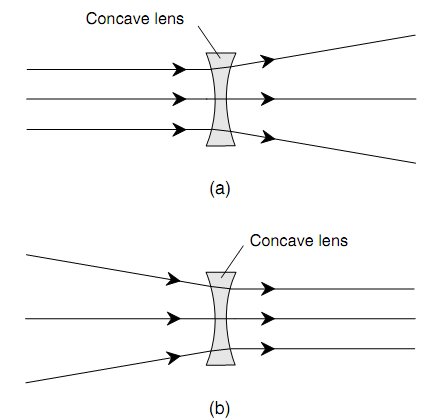Concave Lens:
You will have some problem finding a concave lens in a department store, though you must be able to order one from a specialty catalog or a Web site. The word concave refers to the fact that one or both faces of the glass bulge interior at the center. This kind of lens is also termed as a diverging lens. It spreads parallel light rays outward (as shown in figure below). It can collimate converging rays when the convergence angle is just right (as shown in figure below).

Figure: (a) A concave lens spreads parallel light rays. (b) The similar lens collimates converging light rays.
Since with convex lenses, the properties of a concave lens based on the diameter and the extent to which the surface(s) leave from flat. The greater the difference in thickness among the edges and the middle of the lens, the more the lens will cause parallel rays of light to deviate. If you look via a concave lens at a close-in object like a coin, the features are decreased; they emerge smaller than they look with the unaided eye.
The surfaces of concave lenses, such as those of their convex complements, are commonly spherical. Some of the concave lenses have similar radius of curvature on each face; the others have diverse radii of curvature on their two faces. Several diverging lenses have one flat face; these are termed as plano-concave lenses.